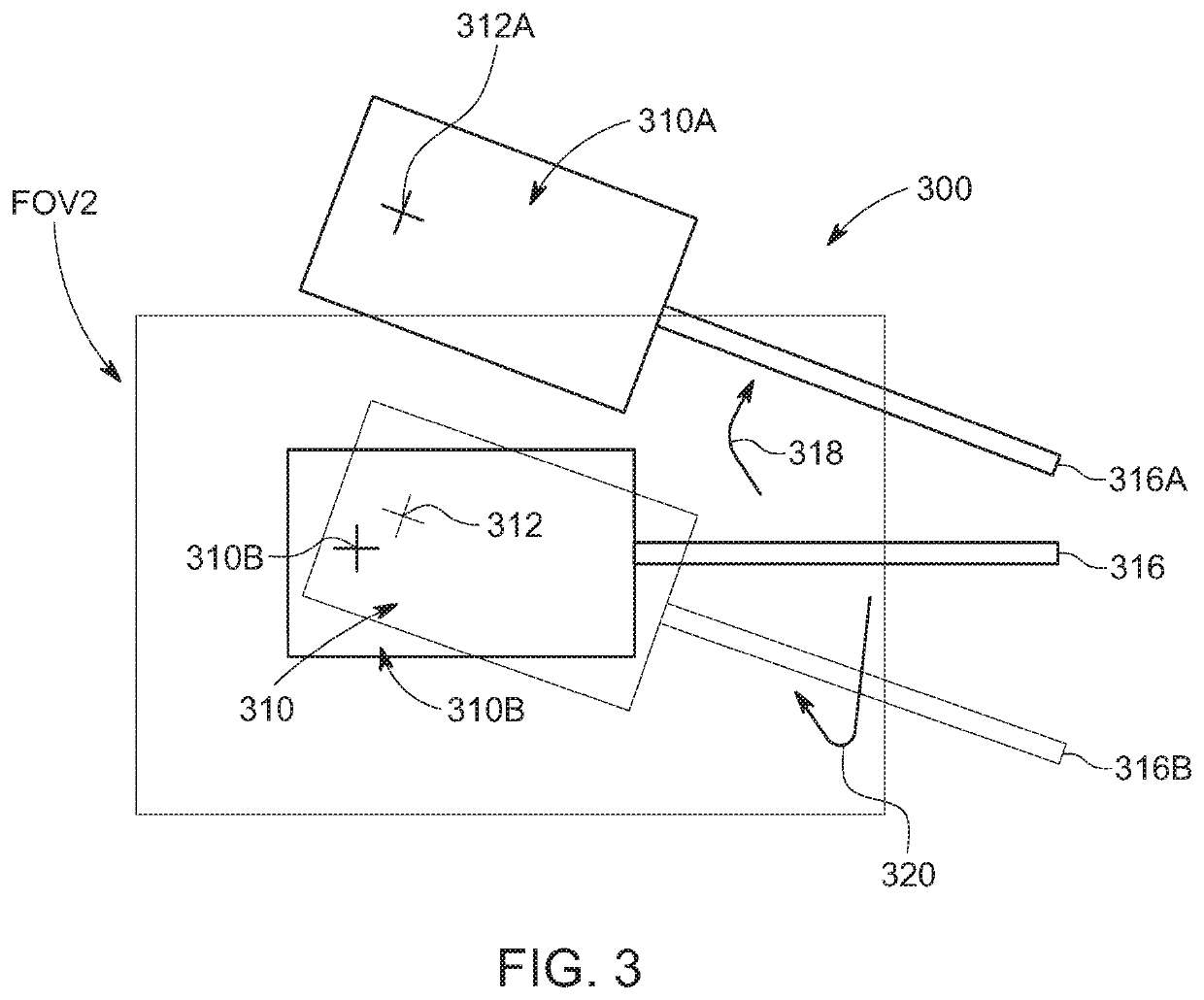System and method for automatic hand-eye calibration of vision system for robot motion
a technology of robot motion and automatic hand-eye calibration, which is applied in the field of machine vision systems, can solve the problems of limiting the speed, accuracy and/or robustness of the calibration process, and achieve the effect of reducing the separation distan
- Summary
- Abstract
- Description
- Claims
- Application Information
AI Technical Summary
Benefits of technology
Problems solved by technology
Method used
Image
Examples
Embodiment Construction
[0014]I. System Overview
[0015]A. Robot-mounted Camera and Stationary Calibration Object
[0016]FIG. 1 shows an robotic manipulator arrangement 100 in which a multi-axis (e.g. six-axis) robot arm 110 is shown on a fixed base 111 with an end effector 112 that is adapted to carry a vision system camera assembly 120. The camera 120 is manipulated around the workspace so that it can direct its optical axis OA and field of view into alignment with a calibration object / plate 130. The object 130 can define any appropriate calibration pattern and associated fiducials—for example crossing lines 132. The camera can be mounted on the end effector 112 in such a manner as to allow it to experience a full range of motion along a plurality of axes. The end effector 112 can also include a manipulator (grippers, suction cup, etc.) to move an object of interest (e.g. a part undergoing alignment or pick-and-place). In this manner, the vision system camera assembly 120 moves in tandem with the end effecto...
PUM
 Login to View More
Login to View More Abstract
Description
Claims
Application Information
 Login to View More
Login to View More - R&D
- Intellectual Property
- Life Sciences
- Materials
- Tech Scout
- Unparalleled Data Quality
- Higher Quality Content
- 60% Fewer Hallucinations
Browse by: Latest US Patents, China's latest patents, Technical Efficacy Thesaurus, Application Domain, Technology Topic, Popular Technical Reports.
© 2025 PatSnap. All rights reserved.Legal|Privacy policy|Modern Slavery Act Transparency Statement|Sitemap|About US| Contact US: help@patsnap.com



